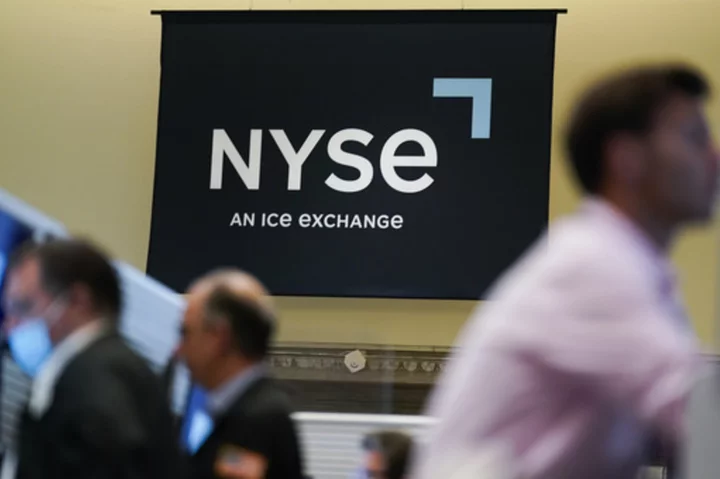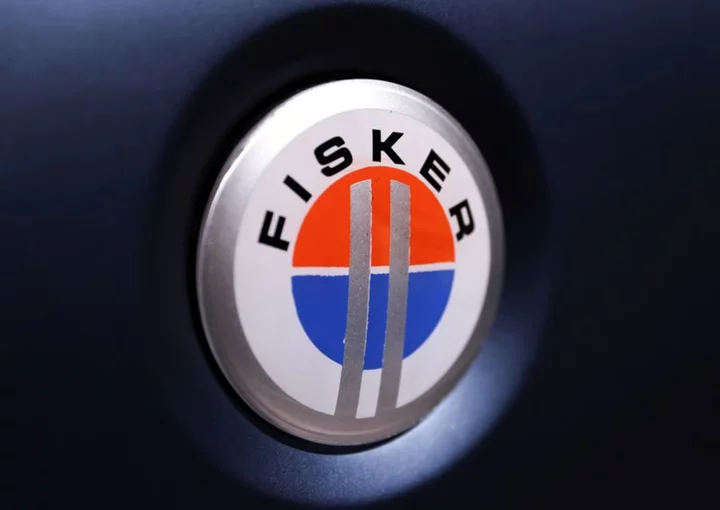DEARBORN, Mich. (AP) — Across the room from Ford Product Development chief Doug Field was a pile of two-dozen auto parts, each with its own small computer, and software written by the parts manufacturer.
Field, who was hired away from running Apple's secret auto project two years ago, and before that served as Tesla head of engineering, explained at an investor event that the automaker is moving to get rid of the pile, consolidating most computing decisions into a central processor running software written by Ford.
The change will fundamentally change how people use their cars. Most automakers are counting on software services to boost future profit margins.
Field, 57, also Ford's chief technology officer, talked to The Associated Press about the change and the transformation to electric vehicles. The interview is edited for length and clarity.
Q: How far along is Ford on moving to this central computing system?
A: The transition has happened where we designed the hardware and the software for the immediate user interface, the center screen. That's gone into both the F-150 Lightning EV as well as the internal combustion F-Series. The next step is with our next generation of electric vehicles (coming in 2025). We're expanding to control the overall vehicle and control over the autonomy system. There will be software in parts that comes from suppliers that is appropriate. The reason for that is to make it as fast as possible. A great example is firing the air bag. We don’t want that coming back through the central passage.
Q: As a driver, why should I care about this?
A: The car’s a robot, which means the interaction with the software includes pieces of hardware. So something like an Amazon interface where you know a delivery is coming. A one-time code opens the trunk. Doesn’t open the rest of the car. They get to drop it off. That requires an interaction between centralized software and what today is a locking-unlocking module. There also are sensors that we don’t have access to the information. An easy example is an autonomy system that’s supposed to keep you in the lane. There’s a camera. We can't say to the customer that we're going to give you a dash cam for free or for a subscription where it’s always running. And if we detect any kind of a bump or anything like that, you’ve got a 30-second recording. We will be able to do that. We talked a little bit about our ability to predict if the car is heading toward a failure or a wear-out situation. I want to count wiper strokes combined with how much water is coming down and where it’s being driven and how dirty it is. Maybe develop an algorithm that knows exactly when your wiper blades are wearing out.
Q: How do you come up with something that's compelling enough to get me to part with my hard-earned money and subscribe?
A: The model is already transitioning from ‘you check a box when you buy the car’ to ‘you can get a free trial.’ You only part with your hard-earned money after you are on the road trying it and say, ‘this is pretty great.’ A big part of how I try to guide the engineers is you must earn the right to collect money. You’re going to come up with things, you’re going to try them.
Q: You've shown the bear cam, where a Bronco parked at a campsite recognizes a bear nearby and may honk the horn to scare it away. How important is security?
A: We are going to build a whole set of services around this. The car is the most sophisticated sensor that you have in your life, and the number of accelerometers and microphones and cameras and things on it will allow it to be not only something that protects you when you’re in the car, but it’ll actually be useful when you’re not there. Even acting as a remote sentry if there’s stuff going on outside the house.
Q: Does having a centralized computer open you more to the possibility of hacking?
A: Anything where you are allowing the car to be software-updated opens you to that possibility. You need to have an architecture where that has been really carefully thought through. And the more you go toward things like firing the airbags or controlling the steering, the more that becomes a pretty involved process to actually update your access.
Q: How long will Ford still be selling internal combustion vehicles?
A: There are a number of applications where it is going to be near impossible for an EV to perform the same mission. There will be many, many places where EVs are a slam dunk. There will be ones where it’s going to take a lot of work to get battery technologies to the point where it could serve that mission. There are ones we see now that the ICE engine needs to be a part of it. Maybe we partially electrify it, but they’ll be out there. The incremental value to the world of getting those last ice engines out versus the value that they provide to an ambulance in Alaska. That will take a very, very long time.
Q: Affordability has become a big issue. Ford has gotten out of cheaper cars in the U.S. Is there a $20,000 EV coming?
A: I don’t want to talk a lot about what we’re doing here. It is possible, with the advent of EVs, to make step changes in the way vehicles are built and sourced. Yes, I believe very low cost EVs are possible. I also believe the way the business model is changing is going to require it. If you are in the software business, what you want is installed base. How many people can I sell software to? To do that, you need affordability.









